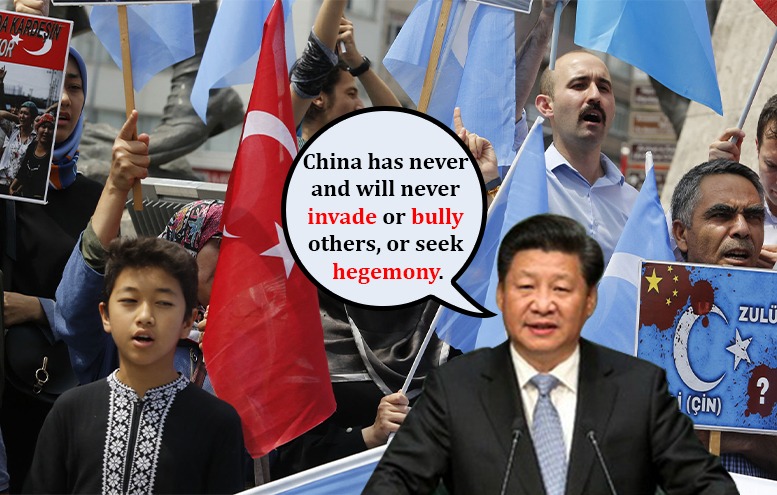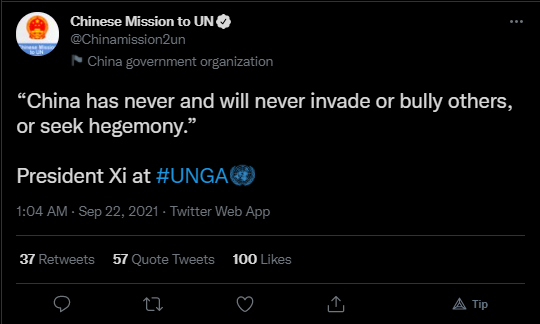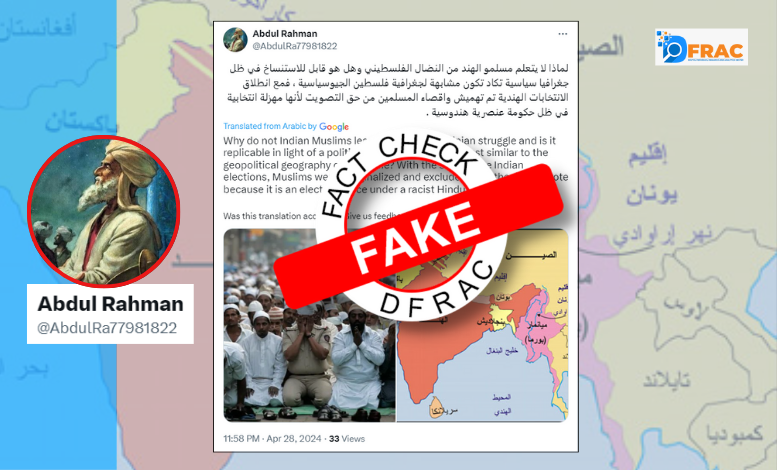On September 21,2021, the President of China Xi Jinping addressed a high-level meeting at the UN General Assembly via a video link. In his speech, he talks about how China has pledged a lot of money to mitigate the Covid-19 pandemic. He also took a jab at the US by saying that with recent examples it can be seen that external interventions in a country never leads to peace. He goes on to talk about how China has always promoted peace and harmony. In the video attached below at about the 11:42 mark, we hear him say that,”China has never and will never invade or bully others, or seek hegemony.”
The official handle of the Chinese Mission to the UN also tweeted this quote from their account.
Fact-Check:
While the Chinese President has claimed that the the country has never invaded other country or bullied others, we found various instances of when the Chinese army invaded different territories:
- China’s occupation of Vietnam from 1407-1927
China invaded Vietnam and occupied the territory for 20 years under the Ming Dynasty. This was called the Fourth Era of Northern Domination.
- China’s invasion of Korea in 1636
During the Qing dynasty, China invaded Korea in 1636 and forced the Koreans to recognize the Qing emperors as their overlords and to pay tribute to them. The Koreans were also forced to provide supplies to Qing troops and were prohibited from building castles. Also, during the Qing dynasty, China invaded Myanmar four times between 1765 and 1769.
- Annexation of East Turkestan in 1949
China claimed East Turkestan in 1949 and believed that the region of Xinjiang has always been a part of Chinese administration, however historical evidence for this is scant. The region is now strife with ethinic and religious conflict and the systematic oppression of Uyghur people.
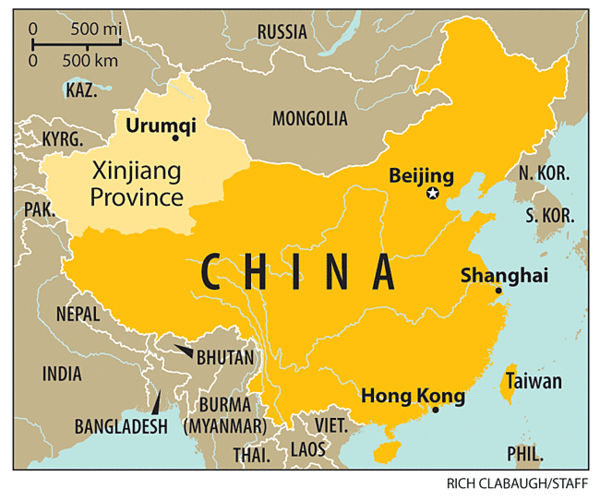
- Invasion of Tibet in 1950
Perhaps the most brazen act on behalf of the Chinese government was the invasion of Tibet whose people to this day are fighting the government. The Chinese do not recognise this as an invasion.

- Invasion of India in 1962
China, under the CCP, invaded India in 1962 and seized the border region of Aksai Chin, an area the size of Switzerland. China also attempted to seize Arunachal Pradesh, India’s northeasternmost state, but failed. India’s loss in the 1962 Sino-Indian War led India to develop the atomic bomb and to become a nuclear-armed state.
- Invasion of Soviet Union in 1969
In 1969, the Chinese army launched an attack on the Soviet Army after USSR failed to have over Zhenbao Island to China.
- Another invasion of Vietnam in 1974 & 1979
China seized the Crescent Group of the Paracels in 1974 from the South Vietnamese government in the Battle of the Paracels. In 1979, China invaded Vietnam and in the month-long war, China captured several Vietnamese cities near their common border.
- Invasion of India in 2020
In May 2020, Chinese forces entered the Galwan Valley and occupied Indian territory. This led to the death of many soldiers on ground and for the first time in decades, shots were fired along the LAC. This source of this conflict is majorly traced to China’s landed grabbing techniques.
Here is what the map of China looked like before its invasions and annexations dating back to the 19th century,
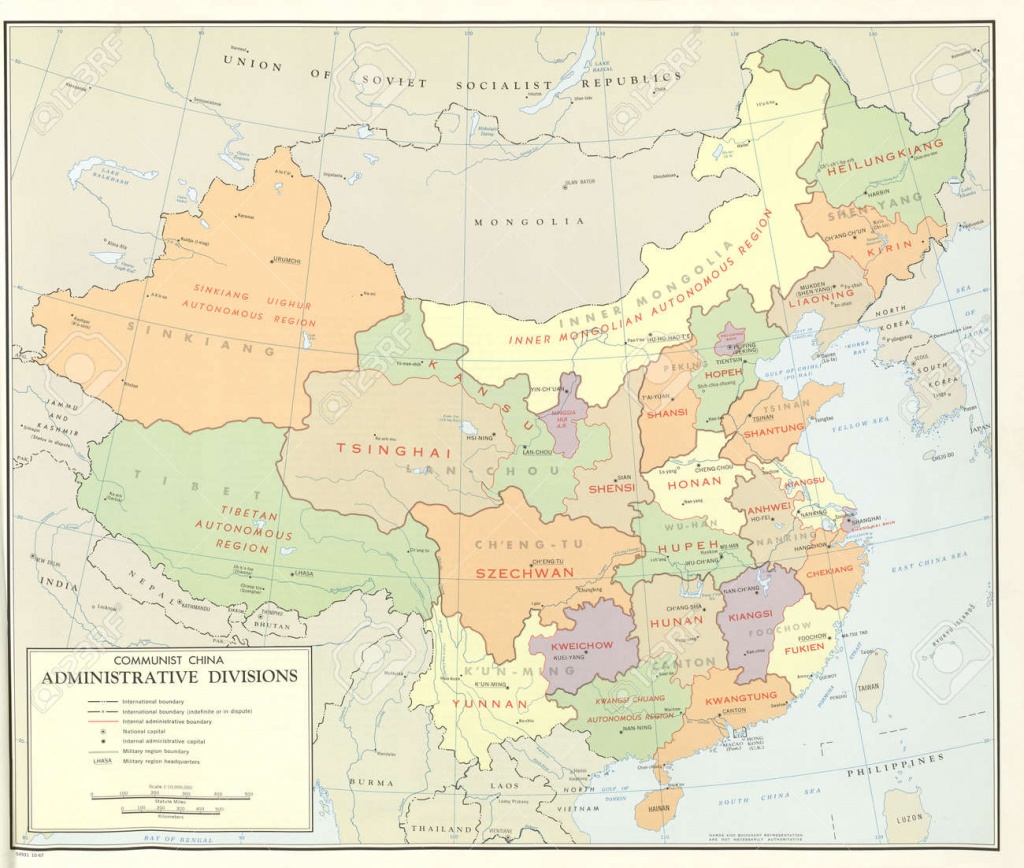
“China would never bully others”
Merriam-Webster describes the word “bully” as “one who is habitually cruel, insulting, or threatening to others who are weaker, smaller, or in some way vulnerable”.
China has a terrible human rights record. The Chinese government up till recently has sought to silence various groups of people asking for independence in its region including Uyghur Muslims, Hong Kong residents, Tibetan activists and Chinese LGBTQI+ individuals.
Various reports by human rights organizations have released reports on China details the crackdown on freedom of expression and religion, forced detention camps for Muslim Uyghurs, mass surveillance of its population and enforced disappearances.
China through its infrastructural and investments in overseas countries has become a trap for many underdeveloped countries. Employing the debt-trap policy through the BRICS bank and other China has lent $1.5 trillion dollars to 150 countries creating hidden debt that countries will have to go under. This is a classic example of hegemonic behavior.
Conclusion
Through our historical as well as current analysis of China’s actions and policies, it is clear that China displays certain qualities its President vehemently denies. Therefore, the claim made by President Xi Jinping is false and misleading.


